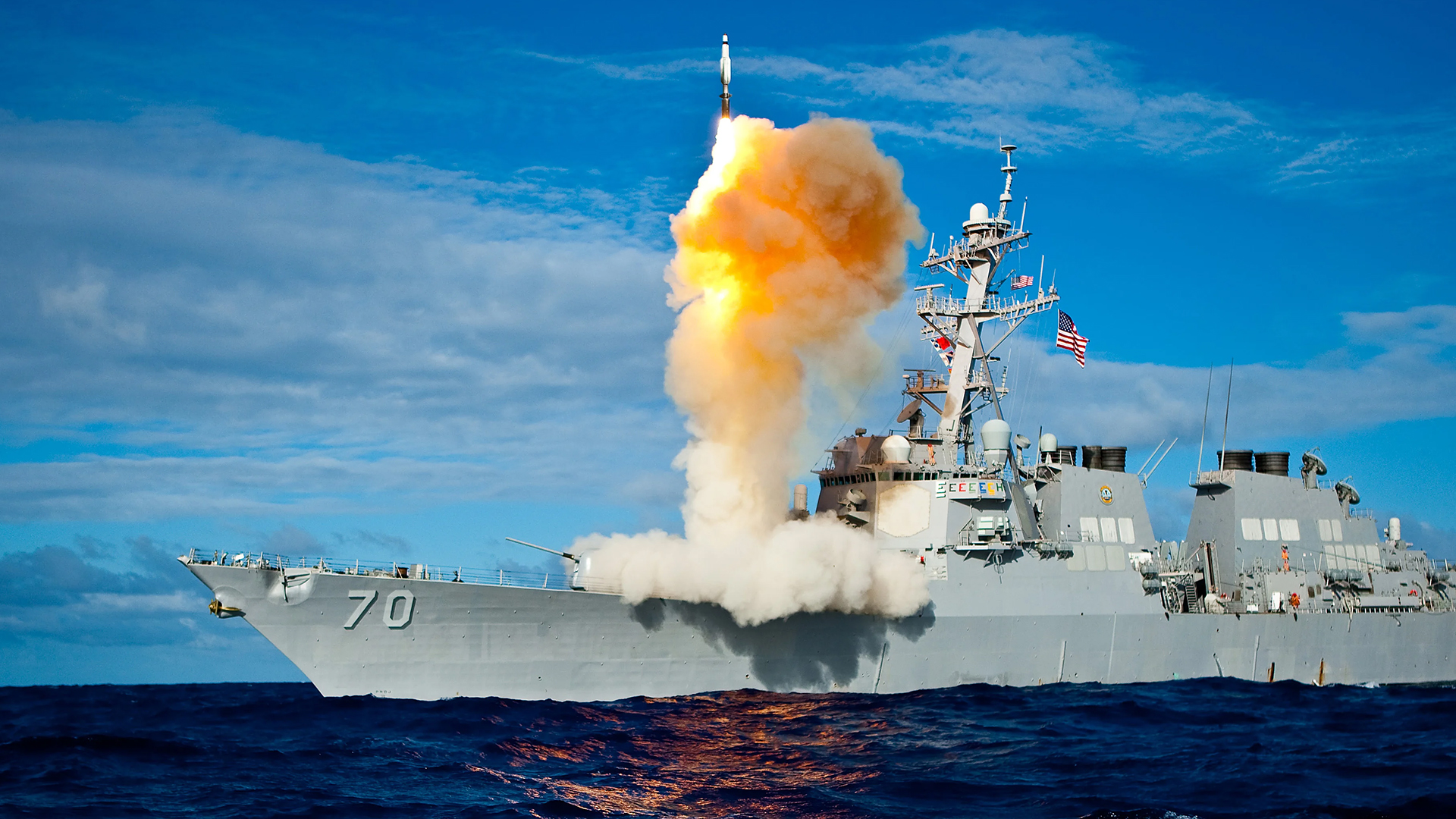The U.S. Navy’s surface fleet has fired nearly 400 individual munitions while battling Iran-backed Houthi rebels in the Red Sea over the past 15 months. That includes the firing of 120 SM-2 missiles, 80 SM-6 missiles, 160 rounds from destroyers and cruisers’ five-inch main guns, as well as a combined 20 Evolved Sea Sparrow Missiles (ESSM) and SM-3 missiles.
That unprecedented disclosure of munition expenditures was revealed by the head of Naval Surface Forces, Vice Adm. Brendan McLane, during the annual Surface Navy Association conference on Tuesday, which TWZ attended. The remarks by McLane and other Navy brass offered fresh insight into what sailors are facing in the Red Sea, beyond the generalized U.S. Central Command press releases that often only offer very limited details of a given day’s kinetic events, if information is released at all.
All told, Navy ships, aircraft and submarines have engaged more than 400 Houthi aerial drones, cruise missiles and ballistic missiles since October 2023, when the Yemen-based group began attacking vessels transiting the Red Sea in solidarity with the Palestinian militant group Hamas.
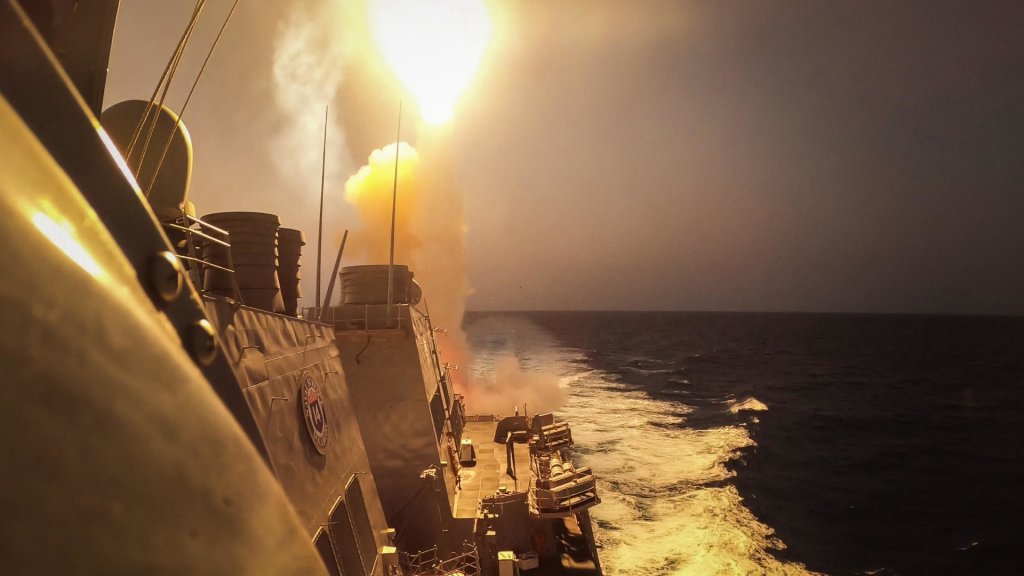
McLane’s munitions rundown reflects the array of layered defenses found aboard a modern American warship. With a range out to 90 nautical miles and an altitude of 65,000 feet, at least according to its manufacturer, the SM-2 is considered the Navy’s cornerstone surface-to-air munition, providing area defense against anti-ship missiles and aircraft.
The SM-6 is the only munition that can perform anti-air, anti-surface, land attack and terminal ballistic missile defense missions, while the SM-3 intercepts ballistic missiles during the midcourse portion of their flight, and the ESSM offers robust protection against aerial threats from close to medium range. McLane’s SM-3 tally likely includes missiles fired to defend Israel from an Iranian ballistic missile attack in April 2024. A destroyer’s Mk 45 five-inch main gun is normally leveled against surface opponents and shore targets, but has anti-air capability as well.
While McLane’s rundown during a panel with other Navy leaders raises further questions about the expenditure of finite American munitions in that campaign, panel brass pointed out the analytic and collaborative leaps and bounds that have occurred across communities since the fight began in October 2023 — cooperation they say will serve the fleet well in America’s next conflict.
A full breakdown of what each of these weapons cost is seen in the exclusive TWZ video below:

Top U.S. military leaders have also in recent months expressed concern that munitions fired in the Red Sea and elsewhere are “eating into” critical munitions stockpiles needed for a future Pacific fight with China, and the sea service has sought extra funding from Congress in the past year to restore these depleted stocks.
On Tuesday, McLane, known in the community as “SWO Boss,” cited the Arleigh Burke class destroyer USS Spruance (DDG-111) as an example of what sailors are facing in those waters. The warship got home from a Red Sea deployment with the USS Abraham Lincoln (CVN-72) Carrier Strike Group (CSG) in December.
“They were in a fight where they shot down three anti-ship ballistic missiles (ASBM), three anti-ship cruise missiles (ASCM) and seven one-way [unmanned aerial vehicles, or UAVs],” McLane said. “So that’s how it kind of rolls up.”
The combat capabilities on such warships are controlled by a Combat Information Center (CIC), manned by sailors and officers who are being tested in ways a CIC has never been tested before, as TWZ reported earlier this month.
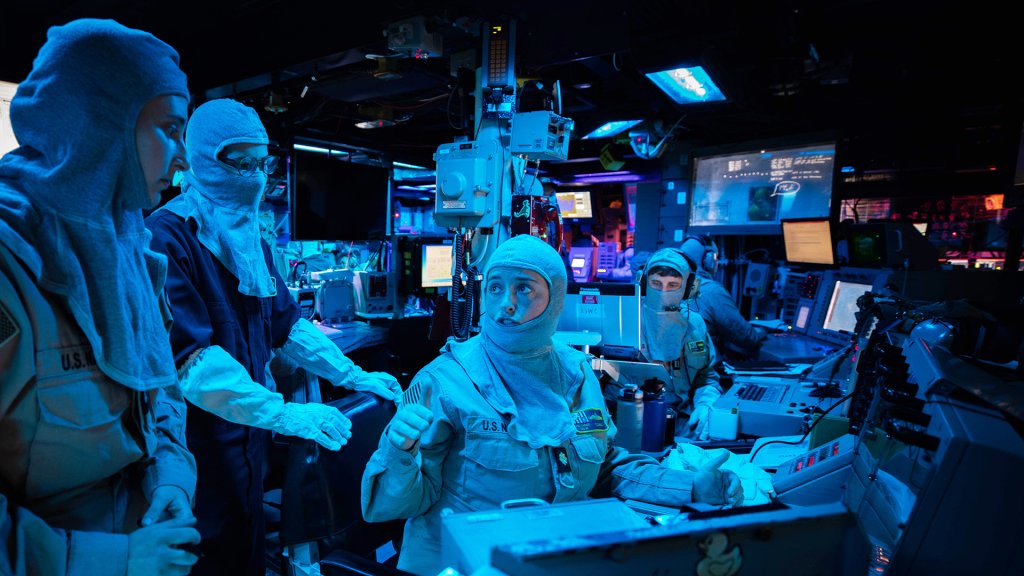
McLane added that the Navy’s missile expenditure in the conflict is within “the historical norm.”
“We’ve done the analysis with what we used to shoot in World War II, and we’re at about two rounds per incoming missile,” McLane said.
Later in the day, during a speech on the state of the surface fleet that TWZ attended, McLane emphasized that warship commanding officers are not worried about munitions cost, “nor should they be.”
“They have other things to worry about, like what’s for breakfast,” he said. “The cost of the missile that they are going to shoot is not one of the things that they are worried about.”
McLane added that “more modest threats” like aerial attack drones are being engaged with a destroyer’s five-inch main gun and electronic countermeasures, along with fixed and rotary-wing aircraft.

These fresh insights come as the Navy continues to battle Houthi barrages on an at-times daily basis, and as fact-finding continues into how the Ticonderoga class cruiser USS Gettysburg (CG-64) came to shoot down a U.S. F/A-18 Super Hornet last month during a sustained Houthi attack. The ship and jet involved were assigned to the USS Harry S. Truman (CVN-75) CSG, the fourth strike group to operate in those waters since October 2023, and one that had only recently arrived in theater.
While precise official details of the Dec. 22 shootdown remain scant, Vice Chief of Naval Operations Adm. James Kilby said during the conference that three separate investigations have been launched to find out what happened.
One is a so-called “JAGMAN” investigation, an administrative probe that assembles the details around an incident for potential administrative or judicial action if the higher-ups deem it necessary. The second investigation into the friendly-fire incident is conducting an assessment of the ships deployed with the Truman, while the third is a Naval Safety Command-helmed effort.
“We understand that our forces, families and supporting commands also have many questions,” Kilby said. “However, to maintain the sanctity of the process, we will not be taking questions after this panel. We are committed to understanding what happened on Dec. 22, and more broadly, we’re committed to being a deliberate learning organization.”
In recent days, the Houthis have claimed that they conducted a nine-hour attack on the Truman CSG, forcing it to leave the Red Sea, according to media reports. U.S. Central Command has not commented on the alleged Jan. 11 attack, but has posted photos of the Truman and its strike group at sea on Monday.
“I want to reiterate that the Red Sea remains a dynamic environment,” Kilby said. “We will continue to learn from [the Gettysburg shootdown], the incidents every single day. We learn more from our shortcomings than our successes.”
As the Navy’s surface fleet has continued to battle the Houthis, the community is learning lessons from each and every engagement in near-real time, Kilby noted.
“When I was a young fire control officer on [USS Philippine Sea (CG-58)], I remember sending away [Aegis Combat System] tapes, physically, that means by mail, and waiting months for those tapes to be analyzed and returned to the ship,” he said. “Generally, we could not remember the specificity and the actions we took, or what happened.”
But today, terabytes of ship data from a given Red Sea engagement is sent to other Navy agencies and industry partners and processed within 48 hours, providing the ship’s command and the surface fleet at large with fresh insight on what did and did not work, McLane said.

“I think the first time we had an engagement in the Red Sea, it took about 40 days” to analyze ship data, he said. “Now it’s 48 hours, plus a few more to get the final checks done. It touches everything in our surface warfare ecosystem.”
McLane likened the effort to NFL coaching staffs watching tape of the last game. Lessons learned are shared with the ship, the surface community and technical experts.
“Human memory is fallible,” McLane said. “Sometimes you don’t exactly remember what happened, or you think you remember what happened. We get a taste of that data so that we can reconstruct exactly what happened.”
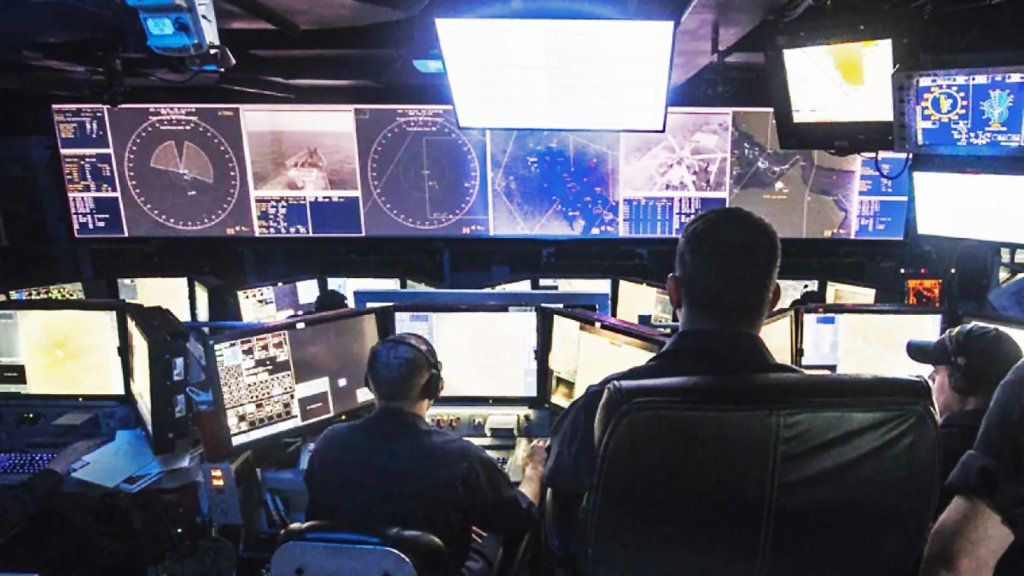
Sometimes those post-game assessments reveal an issue at the software level, and specialists are flown to the ship to ensure that the software is uploaded correctly, while other lessons involve reinforcing the right buttons to press in a certain scenario, he said. A “Red Sea Syllabus” is used to prepare units about to deploy in those waters, and is updated regularly so that every ship has the latest information before entering the area.
The head of Naval Air Forces, Vice Adm. Daniel Cheever, also noted Tuesday that cooperation and coordination between the surface and aviation communities has drastically increased since the Red Sea battle began. Collaboration at speed has become key when preparing a ship or squadron for the Houthi threat.
That speed was on display last year, as the Navy raced to equip its Super Hornet jets flying over the Red Sea with AIM-9X Sidewinder short-range missiles for shooting down Houthi drones, TWZ reported.
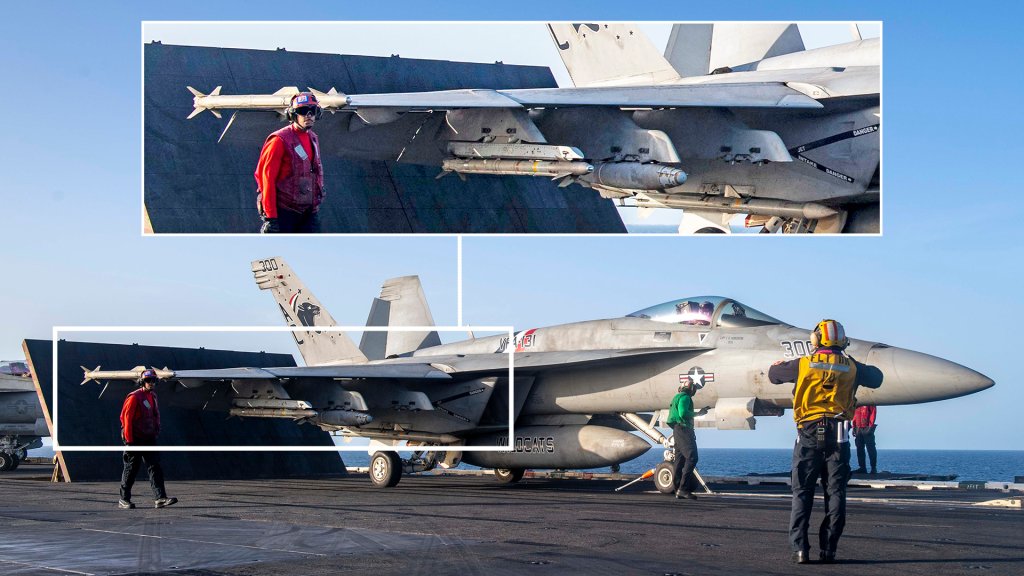
“It’s really the hours and days instead of weeks and months, that’s what we weren’t 100% ready for,” Cheever said. “The speed of this thing is minute, hours, days, maybe, but days is even probably late to need as we work this thing.”
The Air Boss also expressed confidence that the Navy will take these Red Sea lessons into America’s next conflict.
“We’re not just looking at the Red Sea, we’re looking at how this applies to the future of warfighting, and how we need to learn,” Cheever said. “When you look at what’s happened over these 14 months and beyond, it gives me great confidence for what the future holds for any future fight.”
A year ago, TWZ detailed exactly this — an unprecedented learning opportunity and real danger that prolonged combat in the Red Sea presents. This is now playing out exactly in the manner laid out, but, as we saw with the Super Hornet shoot down, the longer this goes on, the more chance there is for a major catastrophe, and the enemy is learning too.
Email the author: geoff@twz.com
